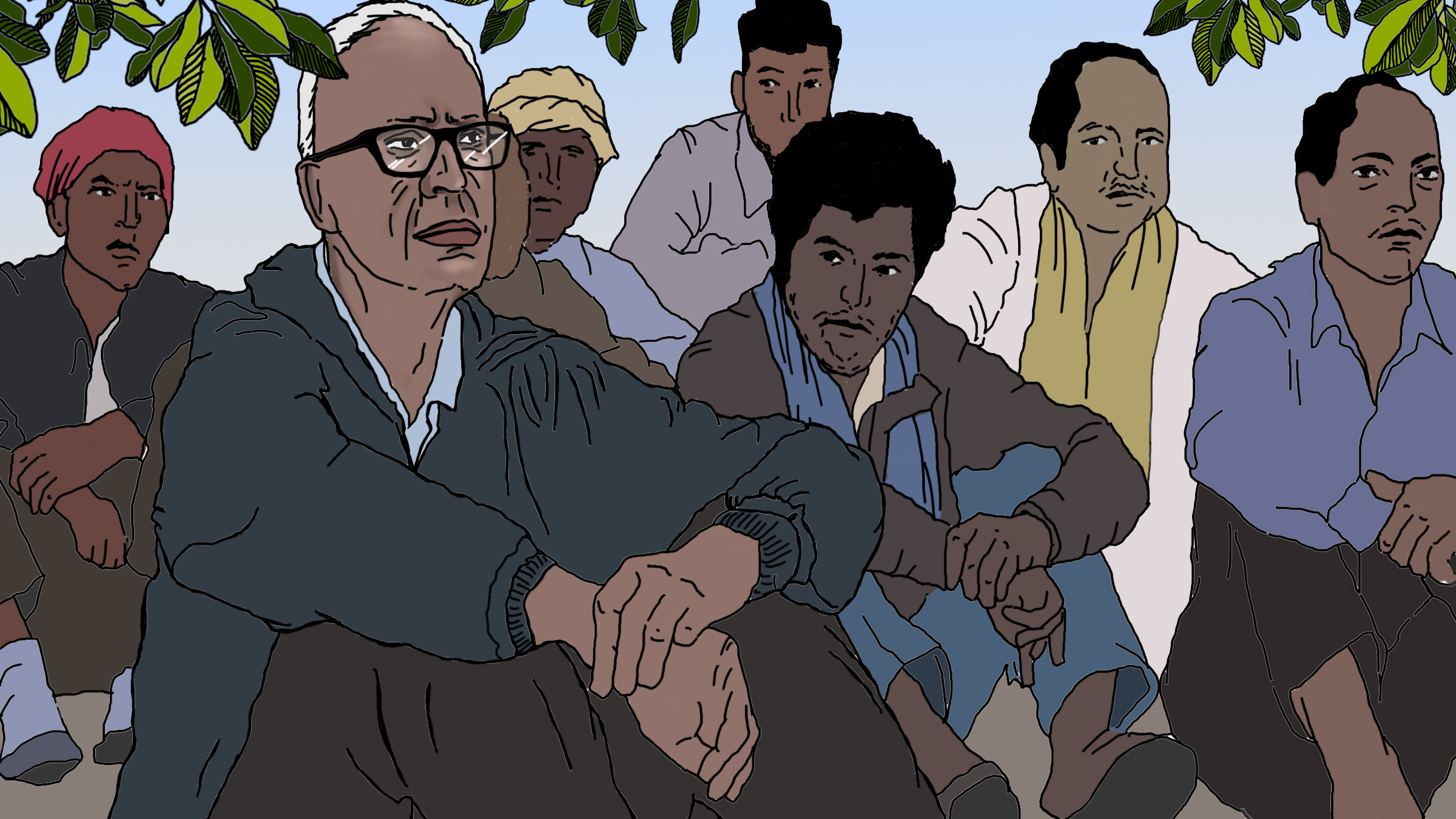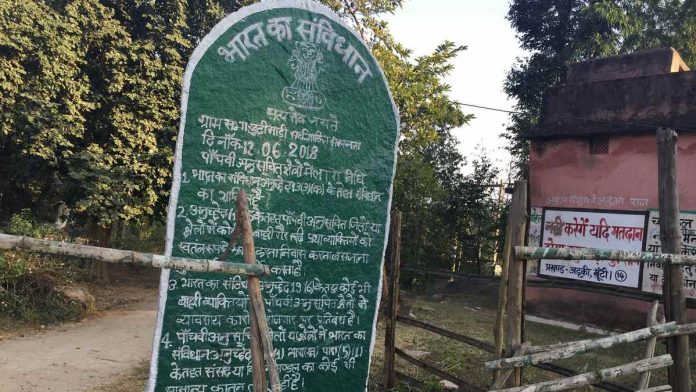

There are just no words left to express the anger and helplessness that overcame hundreds and thousands of people like me when they heard of the custodial murder of an ailing, frail, octogenarian, Fr Stanislaus Lourduswamy, known to the world as Stan Swamy. The various issues that arise from the virtual judicial abdication of responsibility has been powerfully articulated by former Delhi High Court Chief Justice, AP Shah and one can hardly add to that. What is perhaps the most shocking is not that the judiciary abdicated in observing its duty of upholding the Constitutional rights of a citizen but that it seems to have lost even the minimum grace and human concern.
“Medical reports taken on record clearly showed that Fr Swamy had the degenerative Parkinson’s disease, and could not even do basic tasks, such as holding a spoon, writing, walking or bathing. Indeed, the court noted that he had a severe hearing problem, and was physically very weak. But even that did not move them. Every regular bail application that was filed by his lawyers was unequivocally rejected.”
This is shocking beyond words – or used to be once upon a time. But as each day of this regime passes, our threshold of taking shock increases by leaps and bounds. Are we really surprized now, that while this was how they treated Stan Swamy, a goon who had just the other day openly called for mob violence and “shooting down anti-nationals” has now been promoted to the Central ministry?
It is also not necessary to anymore to say how laws like the Unlawful Activities (Prevention) Act [UAPA] are fundamentally violative of a citizen’s right to natural justice, nor indeed talk about the Supreme Court’s implication in the way it has come to be practiced since the Watali judgement discussed in AP Shah’s piece above. Enough has been said and written about all this and all we can do is to join our voices and say “Repeal the UAPA“.
But there is one thing that needs to be underlined – that has perhaps not received the attention it should – and this concerns a continuing long story whose beginnings go back to the end of the eighteenth century, culminating in the Santhal Hul or Rebellion that covered parts of what constitute West Bengal, Jharkhand and Bihar today. Stan Swamy’s story has little to do with the Bhima-Koregaon case – a place that he has never visited before, as he said in his video statement shortly before his arrest by the NIA. As is well known by now from all accounts, apart from the false “evidence” planted in his computer, there is no evidence of Stan Swamy’s connection with events or incidents linked to the so-called “Bhima-Koregaon Case”.
So what connects the late 18th century to the early 21st century episode involving Stan Swamy? In a word, adivasi land and their ongoing dispossession. In the late 18th century, it was the British East Indian Company and Cornwallis’ Permanent Settlement (1793) that was intent of creating private property in land that was the root of the problem. In that process it created the class of zamindars who acquired perpetual hereditary rights over lands that were simply taken over or ‘purchased’ by this new class. It is often thought that this was simply a political act – a part of the British attempt to create a class of the regime’s supporters among the native population. No less important, of course, was the economic ideology that saw the institution of private property as historical progress, which would open the way for capitalism – the White Man’s (Real) Burden if there was any! And sure enough, the “settlement” had the desired effect as forest lands were either directly seized by the powers that be or rapidly bought up by the wealthy, leading to massive dispossession of the Santhals. Indeed, long before the Permanent Settlement, clashes had been going on, epitomized in the four-year long sstruggle led by Tilka Manjhi alias Jabra Pahadia from 1771 to 1774. However, after the settlement the process of their dispossession and their being forced to work as labourers accelerated hugely. Needless to say, to the Santhals and other adivasis at the point of their dispossession, this was not just an economic question but a matter connected to their way of being, their cultural identity and their understanding of the world.
Cut to May 2016. The central government introduced two ordinances that would make it easier to acquire tribal land both for the government as well as private corporate interests. These ordinances – the Chhotanagpur Tenancy 1908 (Amendment) Ordinance and the Santhal Pargana Tenancy Act 1949 (Amendment) Ordinance – brought forth a new resistance from the adivasi population. This movement gave a new dimension to the ‘pathalgadi’ initiative initiated by IAS officer BD Sharma and IPS officer Bandi Oraon, in the wake of the 1996 Panchayat (Extension to Scheduled Areas) Act [PESA]. At that time the older tradition of ‘pathalgadi’ acquired a new dimension. Says the report by Unnati Sharma (linked above):
These green-painted stones are usually 15-feet long and 4-feet wide, and are found in four districts of Jharkhand, including Khunti, the birthplace of Adivasi icon Birsa Munda. The stones include excerpts from the PESA Act and the Fifth Schedule of the Constitution of India, which deals with the administration and control of ‘scheduled areas’ as well as of Scheduled Tribes residing in that area.

After the ordinances Pathalgadi became a movement, a rebellion of sorts and though the ordinances had to be withdrawn after a lot of protests, the struggle over land and dispossession continued – the struggle for jal, jangal and jameen.
It was in this region that Stan Swamy had worked from the late 1980s, where after he moved to Ranchi in 2000. Joseph Xavier SJ and Harshita underline, in their tribute, precisely what made the situation so explosive:
“During these years, various multinational corporations were bent upon extracting the minerals from the very rich sources in Jharkhand, Chhattisgarh and Madhya Pradesh and Orissa. This process was generally preceded by a Memorandum of Understanding (MoU) between the government and the industries. The Gram Sabhas were never taken into confidence, as mandated by PESA Act. Fr. Stan actively participated in the movement led by Adivasis, which opposed the Netrahat Field Firing project, which was to displace thousands of villagers and a number of Adivasi hamlets in Jharkhand. He also opposed the large-scale Koel Karo dam project, which was to displace many Adivasi families.”
This is where one might see the threads come together. The pathalgadi movement was gaining traction and opposition to corporations’ predatory activities being resisted. Thus, Xavier and Harshita point out, it happened that the BJP-led Jharkhand government filed an FIR against Stan Swamy and 19 others for supporting the “anti-national” pathalgadi movement in 2018. He was later declared “proclaimed offender” and a Khunti court issued orders to “attach his property” – and the police took away two tables, a steel shelf, three plastic chairs, a mattress and a pillow!
The other aspect of the government’s discomfort with Swamy has been his campaign for the release of scores of young men and women who have been arrested under the UAPA and all of whom are the poorest adivasis, dalits and Muslims of the region. A report by Chitrangada Choudhury underlines the massive effort undertaken by Stan Swamy and his organization Bagaicha that painstakingly put together a report in 2015, on the state of undertrials in Jharkhand.
The remarkable thing about this report on the undertrials in Jharkhand – and what makes the state utterly nervous – is not that it is just a “human rights” compilation of case studies of those falsely implicated and imprisoned as “Maoists”; rather, it is a deeply analytical report that exposes the connections between what it calls “political brahmanism”, corporate interests and political power. What is more, the report is an emphatic statement about absolute incompatibility of indigenous peoples’ lives and values with the capitalist way of being. The report is equally emphatic in pronouncing the centrality of the indigenous people to the future of humanity at large.
The state and the political elites can obviously see only “Maoism” here. For Stan Swamy too perhaps believed, like Helder Pessoa Camara, the Brazilian Catholic archbishop, that “When I give food to the poor, they call me a saint. When I ask why they are poor, they call me a communist.” Stan Swamy was not just asking why they are poor, he was telling us why, precisely. As a friend wrote in a social media post recently, Stan Swamy once told him that he believed that Jesus was an early communist. It is this that made his presence difficult to the powerful – it is the fact that his Bagaicha was providing the back-up intellectually and politically as well as spiritually, to the ongoing life struggle of the poorest of the poor in that region.
Long Live Stan Swamy! Zindabad!!

This is so tragic, that words fail. Horror and more horror. Thank you for this.
LikeLike
Let me use a cliché, Stan Swamy’s death is only the tip of the ice berg. That a man who devoted his entire life to the service of the most marginalised people of our “great” country had to spend his last days in prison, incapacitated by illness and denied basic dignity by the cruelty and blindness of the system is a reminder that the state machinery is just that, a machine without a heart. Yet that machine or the people running the machine are terrified of men and women who choose to live the life of a caring and sensitive human being rather than go with the flow. Justified concerns have been raised about the other so-called accused in Bhime Coregon case. But there are thousands of others languishing in other jails across the country charged under UAPA. People who were locked in jails for years are finally let off because they had really done no wrong doing. We read or watch those news and forget within a couple of days. Just like our mainstream media has conveniently forgot Swamy. But let us not forget a bunch of people have so much power concentrated in their hands that they can ruin the lives of anyone if they choose to do so.
LikeLike